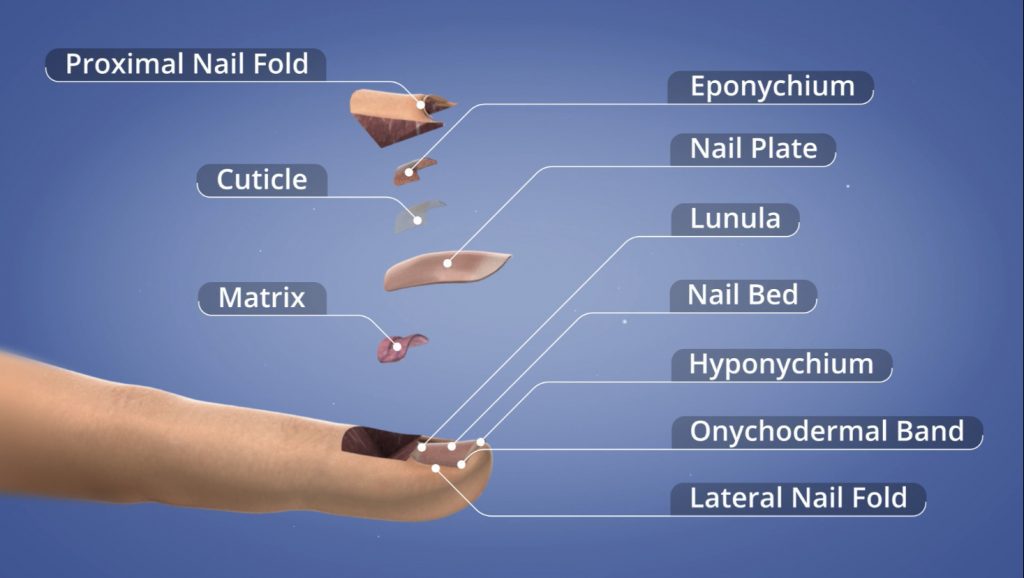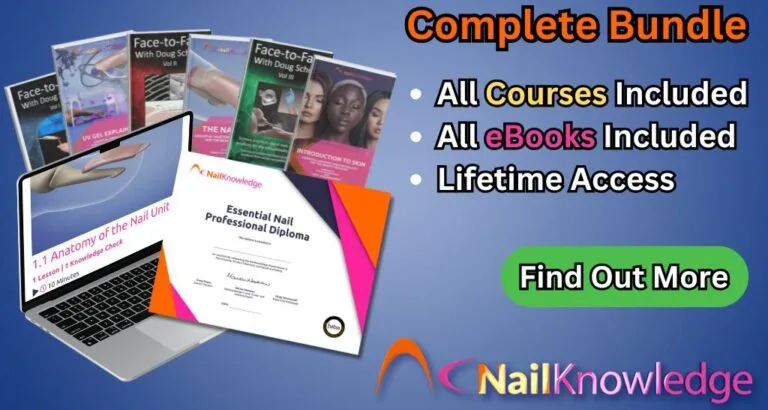Nail services e.g. manicure, nail enhancements etc. have evolved over decades. In each country they have evolved in many different ways. What one country believes to be safe another doesn’t. What one country uses for the nail unit terminology another country uses something different.
Los servicios corrientes para las uñas han evolucionado de diferentes maneras desde la primera mitad del siglo XX y, durante ese tiempo, no han estado asociados a la profesión médica. Ha sido puramente cosmético y ha utilizado productos regulados por la normativa sobre cosméticos de cada país.
La terminología de las áreas y estructuras de la unidad de uñas (incluso éste es un término relativamente nuevo) ha evolucionado con el crecimiento de la industria mundial y se utiliza en la educación para describir y explicar el propósito y la función de cada una.
NO ha habido una aceptación global de los términos, por lo que las descripciones de zonas y estructuras son diferentes en todas partes. ¿Quién y qué es correcto?
The main commercial aspect of the variety of nail services has not strayed into the medical side; it is a cosmetic service (unless individual nail professionals are qualified to diagnose and treat minor conditions of the nails and skin, which is something that is gaining in popularity, but needs additional qualifications.)
So, why is the cuticle no longer the clear frame of skin at the base of the nail plate? Why is the eponychium no longer visible but hidden under the proximal nail fold? Why is the nail root now the matrix?
Has the nail unit evolved into something else? No, it hasn’t.
A lo largo de las décadas, la terminología ha evolucionado, geográficamente, hasta convertirse, en gran medida, en conjeturas. Esta terminología se ha enseñado durante mucho tiempo y ¡cambiarla es difícil!
In a recent conversation with Doug Schoon, who published a cross-section of the nail unit with different terminology and labels, he explains – “nail professionals are not medically trained and there is such confusion with the parts of the nail unit anatomy. It is time that the professional nail industry catches up with the accurate terminology, structure, function and positioning of the nail unit structures that are in-line with the medical A&P.”
Puede que no sea una terminología que las clientas deban conocer, pero sin duda es algo que las profesionales de las uñas deben entender y tener en cuenta. Esta comprensión hará que el profesional de las uñas sea mucho más eficiente con sus servicios. Pero es una montaña difícil de escalar ya que muchos no están de acuerdo con la ciencia probada: la base de TODA la educación de NailKnowledge.

Let’s take ‘cuticle oil’: the accepted benefit of this is to help treat the skin at the base of the nail that is living and not necessarily the dead layer of skin adhered to the nail plate. How can brands change their product names to ‘Proximal Nail Fold Oil’? It doesn’t really have a ‘ring’ to it! So, you may have noticed that some brands have migrated to ‘Nail Oil’.
Los consumidores/clientes necesitan una explicación curada que repercuta en ellos. PERO, como profesionales de las uñas, necesitamos conocer a fondo la unidad de la uña, sus estructuras y funciones. Es hora de empezar a fomentar una aceptación precisa y global de la terminología de la unidad ungueal.
Todos los países están de acuerdo en la terminología A&P para casi todas las demás estructuras del cuerpo humano: huesos, músculos, circulación sanguínea, sistema endocrino, etc. ¿Por qué no la unidad ungueal?
At NailKnowledge we use correct and accurate terminology, positioning and function. It’s time to stop the confusion and agree with the medical profession, anatomists and physiologists, and not make it up as we go along!


